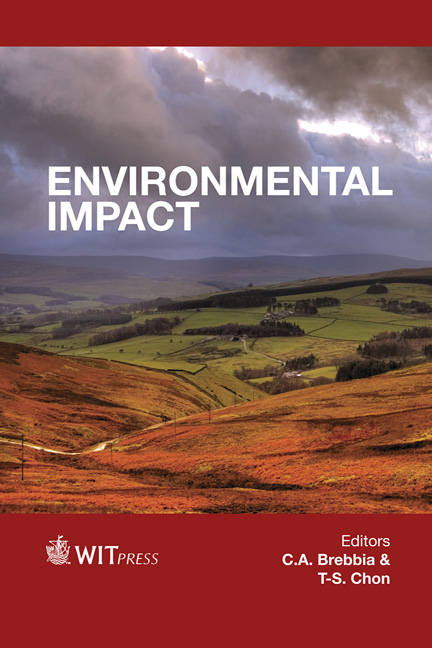Monitoring Ecosystem Health Of The Terminos Lagoon Region Using Heavy Metals As Environmental Indicators
Price
Free (open access)
Transaction
Volume
162
Pages
10
Page Range
349 - 358
Published
2012
Size
2,784 kb
Paper DOI
10.2495/EID120311
Copyright
WIT Press
Author(s)
J. A. Benítez, J. Vidal1, T. Brichieri-Colombi & A. Delgado-Estrella
Abstract
The Terminos Lagoon region is one of the most important biodiversity hotspots of Mexico and Mesoamerica. However, this high biodiversity is threatened by the activities of the Mexican oil industry, urban development, and land use change in the watersheds of the rivers that drain into it. This study presents the results of a monitoring program undertaken from 2006 to the present using heavy metals (Cd, Pb, Hg, Cu, Zn, As, Al, V and Cr) as environmental indicators. Heavy metals were measured in water, sediments and oysters as sentinel organisms, three times a year for 15 different sites. Eventually, metals concentration has been measured on selected marine-estuarine organisms (shrimp, fishes, sea turtles, dolphins, and manatees) to see the effect of bioaccumulation. Although heavy metals levels remained in low concentrations in water, some samples of oysters and mammals presented contamination levels above Mexican Legislation, suggesting effects of bioaccumulation. Keywords: heavy metals, pollution, Terminos Lagoon. 1 Introduction Heavy metal contamination in coastal environments has increased globally in the last decades (Fowler [1], Caeiro et al. [2], Vicente-Martorell et al. [3]). This trend is especially true for coastal lagoons and estuaries, which biochemical processes serve as an efficient trap for contaminants, especially heavy metals
Keywords
heavy metals, pollution, Terminos Lagoon.





